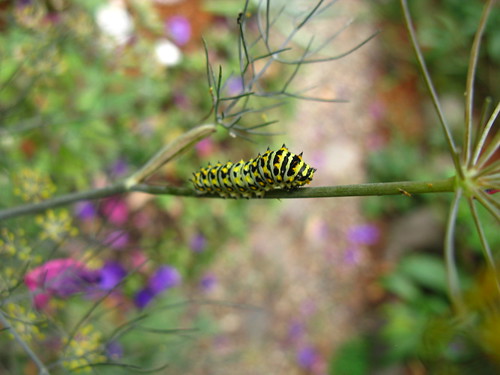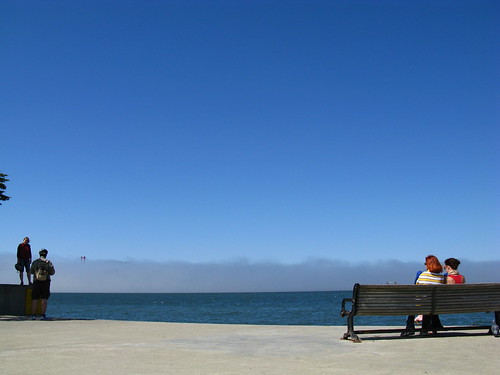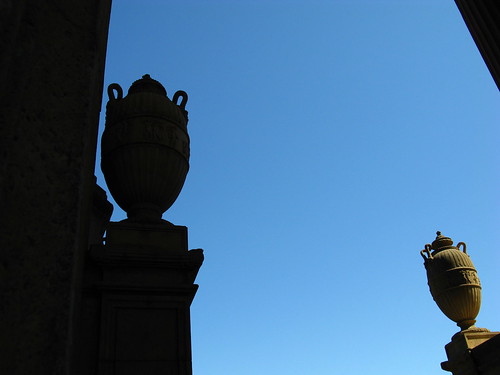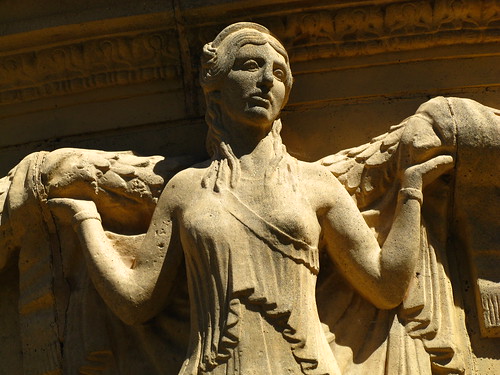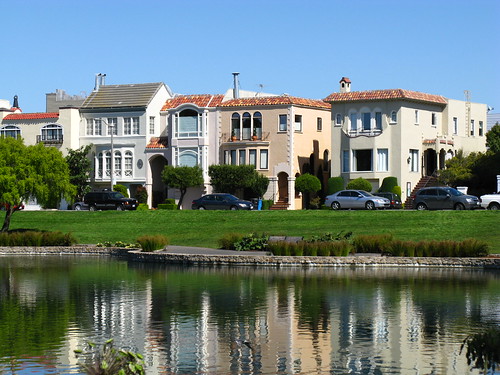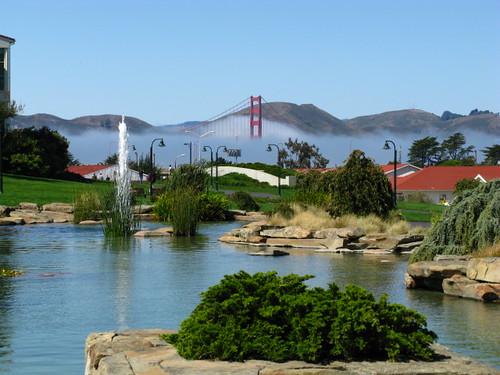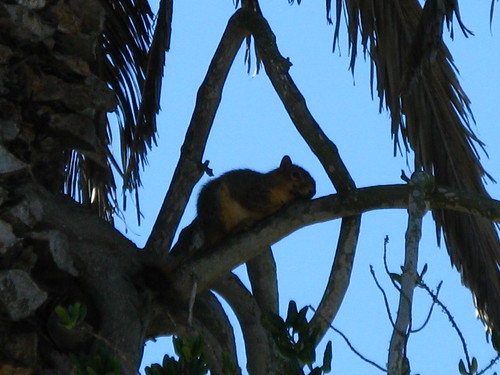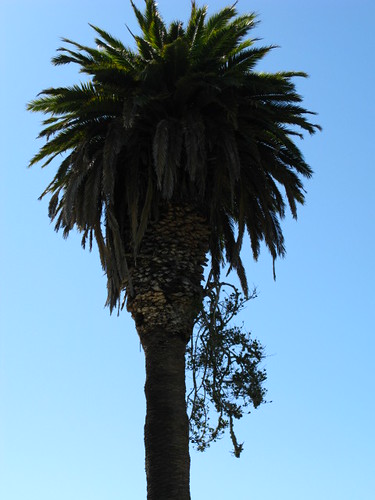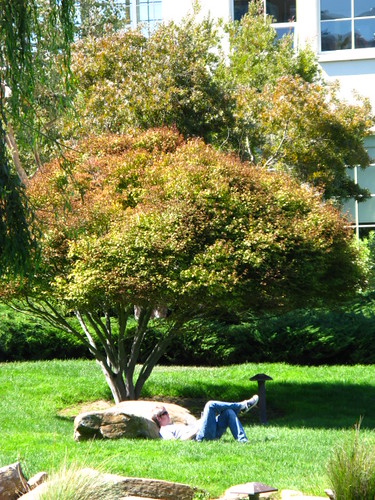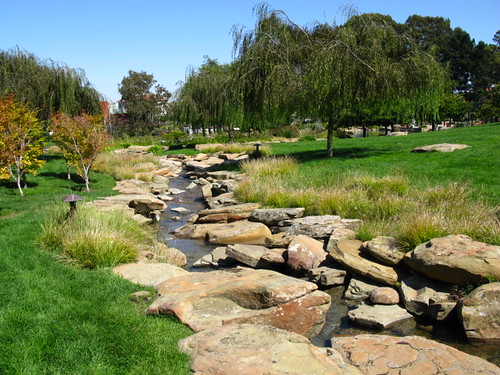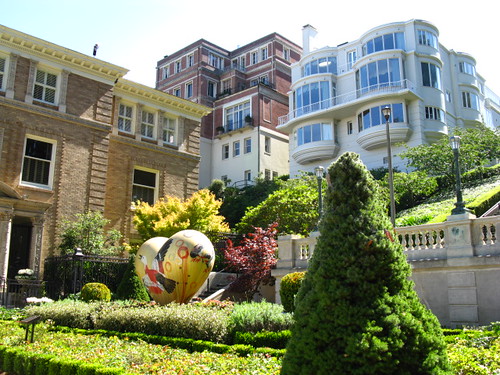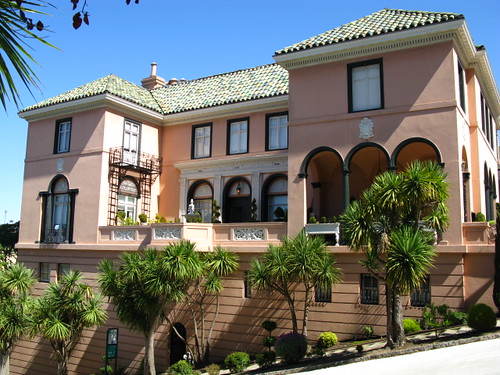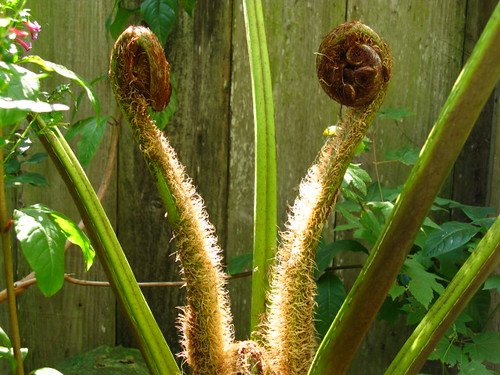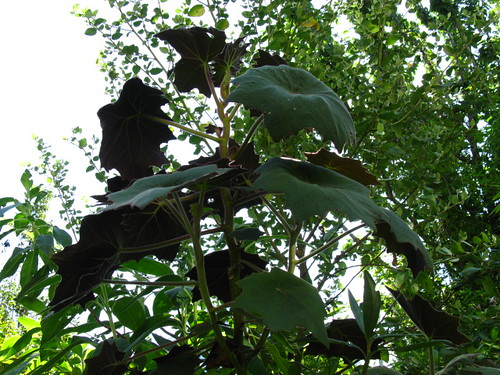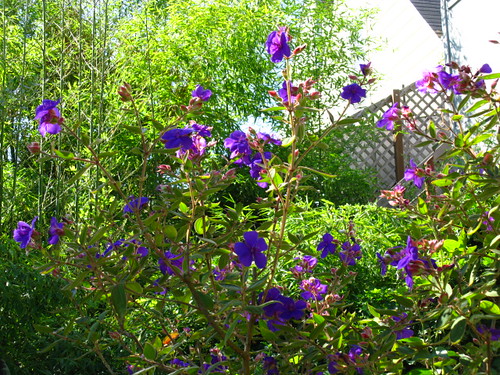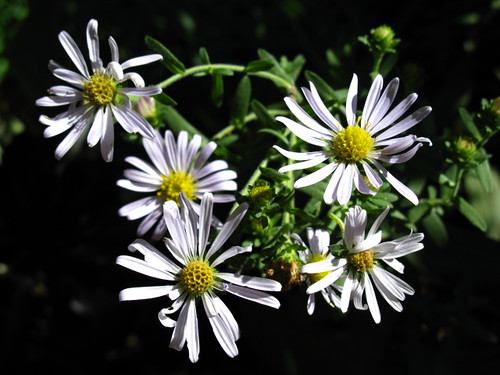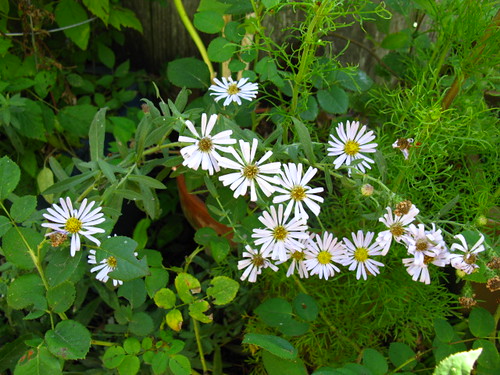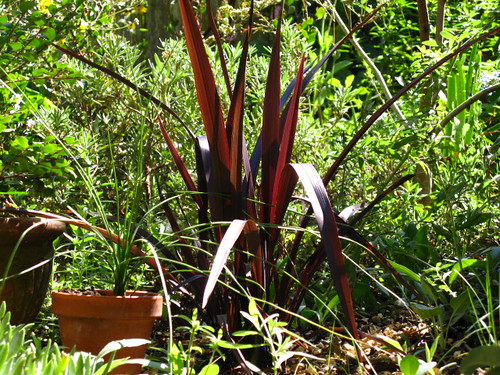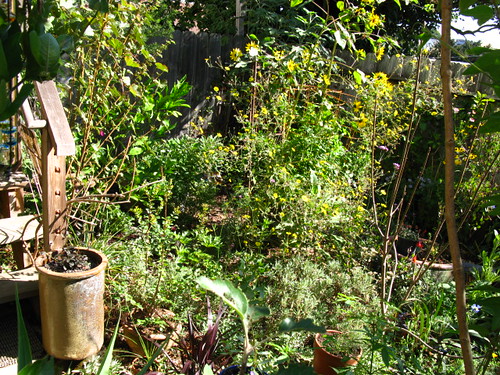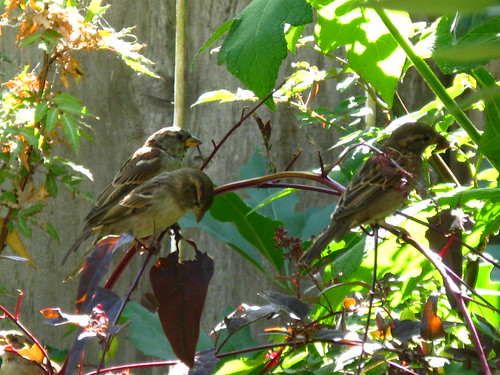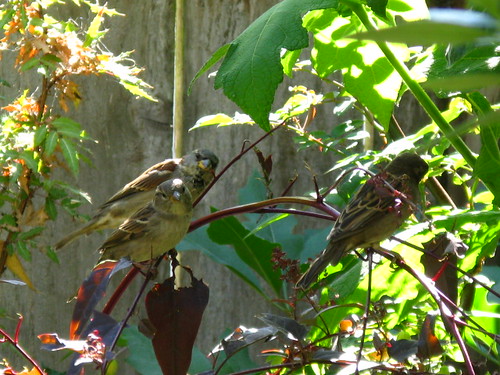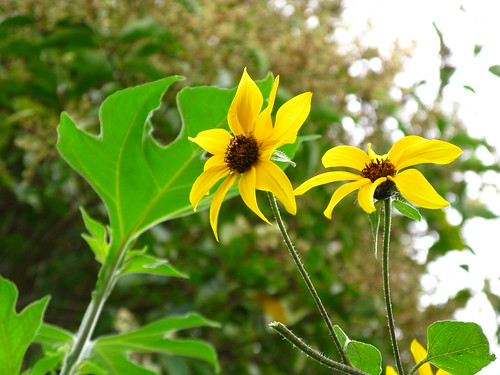
I'm starting to get fall pruning urges...
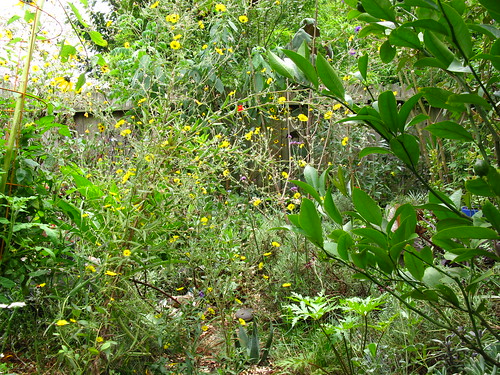
I've had just about enough of the Madia elegans for 2009. But if it goes away, what will the beneficials do? The only thing close to having as many flowers is good ol' Cosmos.
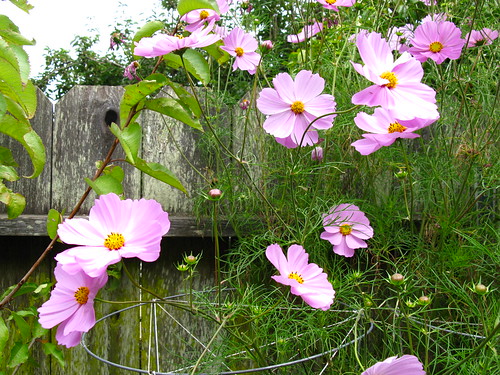
The dahlias are too small, and they're about to crap out. Love the color tho'.
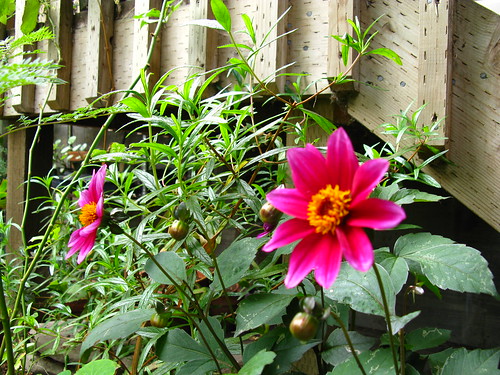
I don't think I mentioned that I'm taking color theory at City College. It's taught by the same woman I took plant ID from. I really like her. Like me, when it comes to color, she seems more interested in flowers than foliage.
I mean I like foliage, & I get why many gardeners prefer to design with foliage in mind...but it's just not that exciting to me personally. Garden vignettes that appeal to me the most tend to be about size and shape and form.
(And by now you may know that I'm very specimen-oriented. Scenes built around one plant, or one kind of plant, like tree ferns or manzanitas, really excite me. What else do you need if you have a forest of tree ferns? Just a place to sit.)
Anyway, back to foliage, I think the most important aspect for me is probably texture, and the surrounding textures. I have a problem with fine texture--I'm hooked on it. But I know too much fine texture creates a busy, restless, anxious garden. It's definitely a problem I struggle with.
I have a few big leafed, coarse-textured plants. Three are giant asters from the cloud forest--Bartlettina sordida (one of the first things I planted), Montanoa grandiflora (new this year), and this one that you're getting to know, Senecio cristobalensis.
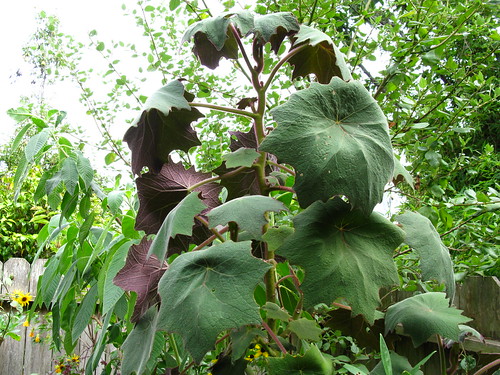
(The Fuchsia behind it is medium, I would say)
And I have the buckeye, Aesculus californica. But it only has leaves for about 7 months. The rest of the time, it's like this:
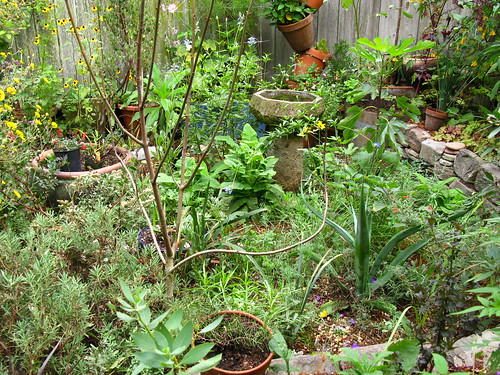
Fine texture overload! Even the agaves I like are fine textured! There are two more coarse textured plants in this picture, the fig (Ficus carica) and the Tower of Jewels (Echium pininana). Those are all new this year. So I am getting better at managing texture. (Yay, me!)
Anyway, all a digression. I was going to talk about flower color--because I'm taking color theory--and show you this Passiflora citrina that I recently got at Filoli. Isn't it nice? So yellow!
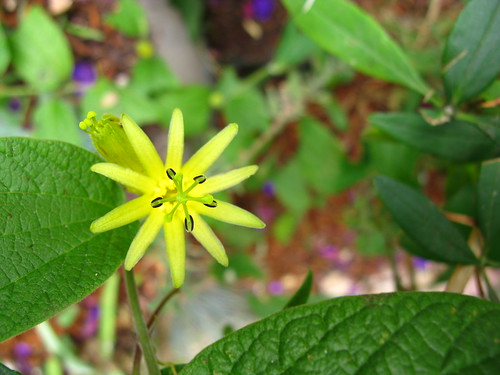
Note: compare it to the "Passiflora citrina" I bought on EBay last year:
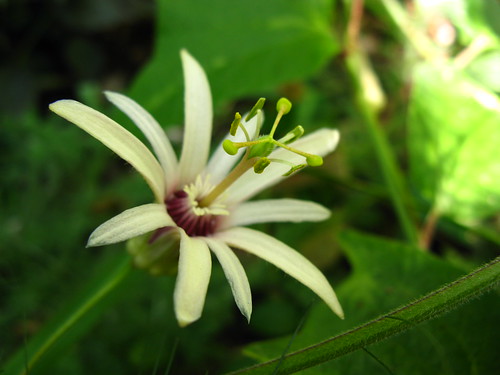
Quite different, isn't it? So frustrating because the whole point of getting P. citrina in the first place was to run it up the Tibouchina urvilleana. Because, complimentary colors..!
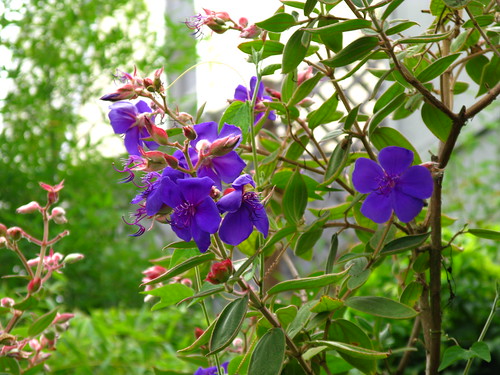
I can see how someone might not like this particular pairing of purple and yellow, but I will be curious to see how it plays out in my garden.
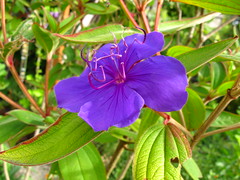
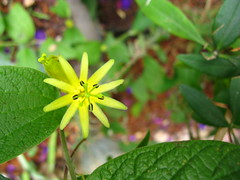
Now we can go back to talking about foliage color for a minute. I was given two black plants this year, including this Ceanothus 'Tuxedo' which is settling in nicely.
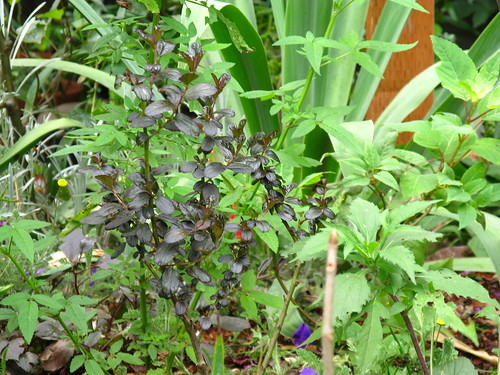
There is always a risk with dark foliage that it will recede and disappear. It's almost happening in that picture. But I'm relying on this plant's eventual size to keep it from vanishing in my small garden.
I also got this Phormium 'Black Adder' which is quite a departure for me because I have this whole thing about phormium and dietes...
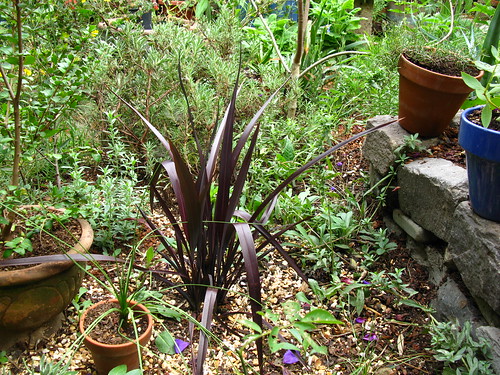
Don't plant it if you're not prepared to dig it up every few years to divide it. Because they get terribly ugly when they're congested. Anyhow, I think I'll be able to keep on top of it.
The problem I want to talk about in the picture above is the juxtaposition of Phormium with the fine-textured gray plant yousee mounding above and behind the phormium, Island Buckwheat (Eriogonum arobrescens).
The pairing is a turn-off. Which is heartbreaking because I grew that plant from seed and it's a personal favorite. But it's just not working out and I'm not sure what to do. I don't have the heart to tear it out--yet. I'm frozen with indecision. How can I rip out a beloved California native for an upstart, laboratory-bred Phormium?
Alas, this is the pain of gardening in a small space. Do you feel my pain?
Time to talk about other things? Happier things? Like caterpillars?
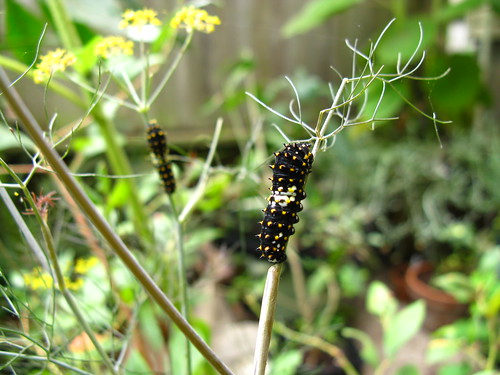
We have three!
